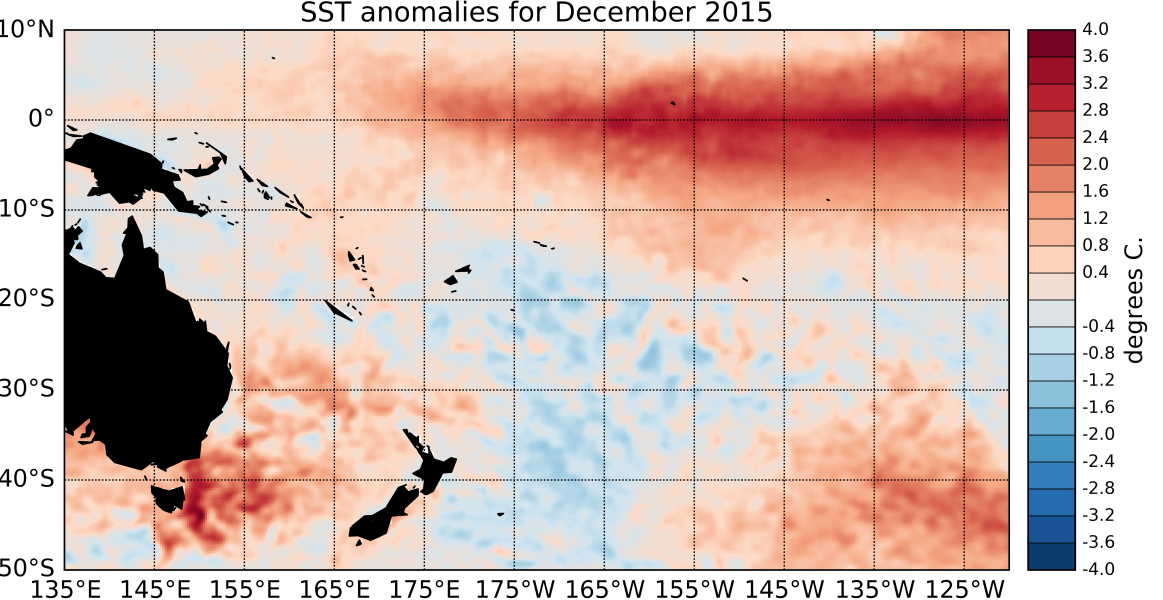Strong El Niño conditions continued to dominate the Tropical Pacific during December 2015. The latest monthly sea surface temperatures (SST) anomalies in the central and eastern Pacific have weakened slightly but still exceed +2°C.
The latest monthly SST anomalies in the NINO3.4 is at +2.3°C, with a similar value in the NINO3 region (eastern Pacific: 90°W – 150°W). The NINO4 index (in the western Pacific) has remained stable at about +1.6°C for December 2015. Sub-surface ocean temperature anomalies in the eastern Pacific have decreased significantly over the last month (December 2015) and reach now about +5°C at 75-100m depth near 120°W (compared to peak values of about 7°C earlier last month).
The Southern Oscillation Index (SOI) is weakly negative at -0.6 for the month of December, however strong westerly wind anomalies (weaker easterly trade-winds) continue to affect the western and central Pacific. Convective activity and rainfall also continue to be higher than normal in the central and eastern Pacific, while parts of the Maritime Continent are still experiencing drier than normal conditions. The Intertropical Convergence Zone (ITCZ) was clearly displaced towards the Equator in the central and eastern Pacific, and the South Pacific Convergence Zone (SPCZ) was shifted to the north and east of normal, both signals being consistent with El Niño. The ENSO Precipitation Index (ESPI) reflects strong El Niño conditions with a value of +2.34 (value to the 12th of January 2016).
A strong Madden-Julian Oscillation (MJO) pulse reached into the central Pacific over the first week of January, and was associated with a very intense westerly wind burst. At the forecast horizon of 14 days, the dynamical and statistical CPC forecasts indicate that this MJO will continue to propagate eastward and weakern. International guidance indicates that El Niño conditions are certain (100% chance) to continue over the next three month period (January– March 2016). Several indicators suggest that although El Niño may have peaked towards the end of December, it is forecast to remain strong over the next three months then decay rapidly, with a return to neutral or a transition to La Niña conditions by the winter (July – September 2016).

